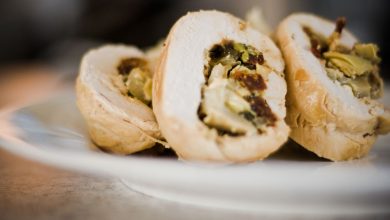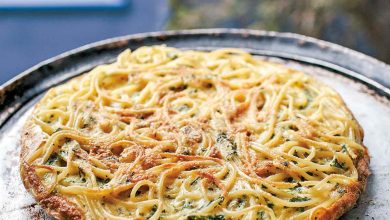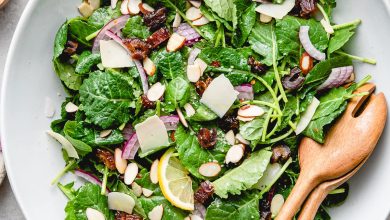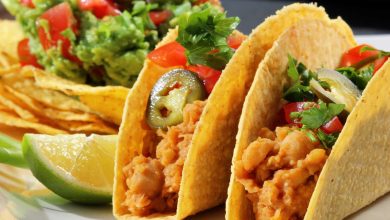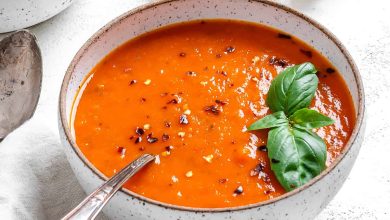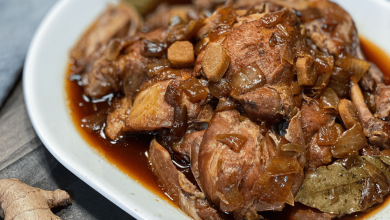Asian Salmon
🍣 Asian Salmon: A Flavorful Delight 🍣
Asian Salmon is a delectable dish that combines the rich and savory flavors of salmon with the vibrant and diverse tastes of Asian cuisine. This fusion dish offers a perfect blend of textures and spices, making it a delightful treat for your taste buds. Let’s dive into its history, components, preparation steps, and cooking time.
📜 History:
The history of Asian Salmon is a tale of cultural fusion. It emerged as part of the global culinary exchange between Asia and the Western world. The Asian influence in this dish can be traced back to various Asian cuisines, such as Japanese, Chinese, and Thai, which bring their unique flavors to this dish. Salmon itself has been a staple in many Asian countries for centuries, primarily in Japan, where it is commonly used in sushi and sashimi.
🥢 Components:
The key components of Asian Salmon typically include:
- Salmon: Fresh salmon fillets are the star of the show.
- Marinade/Sauce: A flavorful blend of ingredients like soy sauce, ginger, garlic, honey, and sesame oil.
- Vegetables: You can add a variety of Asian vegetables like bok choy, snow peas, and shiitake mushrooms.
- Spices and Herbs: Ingredients like cilantro, green onions, and sesame seeds add freshness and flavor.
- Rice or Noodles: Many people serve Asian Salmon with rice or noodles.
🍽️ Preparation Steps:
-
Marinate the Salmon: Mix soy sauce, ginger, garlic, honey, and sesame oil to create a marinade. Coat the salmon fillets and let them marinate for at least 30 minutes to absorb the flavors.
-
Prepare the Vegetables: Stir-fry or steam your choice of Asian vegetables until they’re tender yet crisp.
-
Cook the Salmon: Heat a pan with some oil over medium-high heat. Place the salmon fillets skin-side down and cook for a few minutes until the skin is crispy. Flip the fillets and cook until they reach your desired level of doneness.
-
Make the Sauce: While the salmon is cooking, heat the remaining marinade until it thickens to create a sauce.
-
Serve: Plate the salmon, pour the sauce over it, and garnish with fresh cilantro, green onions, and sesame seeds. Serve it with rice or noodles, along with the prepared vegetables.
⏰ Cooking Time:
The cooking time for Asian Salmon depends on the thickness of the salmon fillets and your preferred level of doneness. Generally, it takes around 10-15 minutes to cook the salmon, plus 30 minutes for marinating. The entire process can be completed in about 45 minutes.
🍱 Asian Salmon is a delightful fusion dish that beautifully marries the richness of salmon with the diverse and tantalizing flavors of Asian cuisine. Whether you’re a seafood lover or an Asian food enthusiast, this dish is sure to satisfy your cravings and impress your taste buds! Enjoy your culinary adventure with this savory creation. 🍱🥢🍣
🍣 Nutrition Facts and Health Information for Asian Salmon 🍣
Asian Salmon is not only a delicious fusion of flavors but can also be a nutritious and healthy choice. Here are some key nutrition facts and health information for this delightful dish:
🔹 Salmon Nutrition:
- Salmon is an excellent source of high-quality protein.
- It’s rich in heart-healthy omega-3 fatty acids, particularly EPA and DHA.
- Salmon is a good source of several vitamins and minerals, including vitamin B12, vitamin D, and selenium.
🔹 Vegetables:
- The choice of vegetables in your dish will impact the nutritional content. Vegetables like bok choy, snow peas, and shiitake mushrooms are low in calories and high in vitamins, minerals, and fiber.
🔹 Sauce/Marinade:
- The sauce/marinade often includes soy sauce, which can be high in sodium. You can opt for reduced-sodium soy sauce for a healthier choice.
🔹 Health Benefits:
- The omega-3 fatty acids in salmon are known for their heart-protective benefits. They may reduce the risk of heart disease, lower blood pressure, and improve cholesterol levels.
- The vegetables in the dish provide essential vitamins and minerals, promoting overall health and well-being.
- Asian cuisine often incorporates ginger and garlic, which are known for their potential anti-inflammatory and immune-boosting properties.
🔹 Calories:
- The total calorie count for a serving of Asian Salmon depends on portion size, ingredients used, and how it’s prepared. On average, a serving can range from 300 to 400 calories.
🔹 Serving Size:
- A typical serving size is one salmon fillet with vegetables and sauce, accompanied by a side of rice or noodles.
🔹 Allergen Information:
- Be mindful of potential allergens, such as soy, sesame, and fish, which may be present in the dish.
🔹 Customization:
- You can adjust the ingredients and portion sizes to meet your dietary preferences and nutritional needs. For a lower-calorie version, consider using less oil and reducing the amount of sauce used.
🍽️ Overall, Asian Salmon is a nutritious and flavorful choice, especially when prepared with a focus on balanced ingredients and portion control. Its rich omega-3 content and the inclusion of vegetables make it a wholesome option for those seeking a delicious and health-conscious meal. Enjoy this dish while reaping its nutritional benefits! 🍽️🍣🥗

